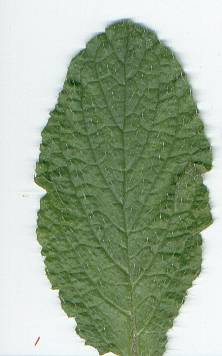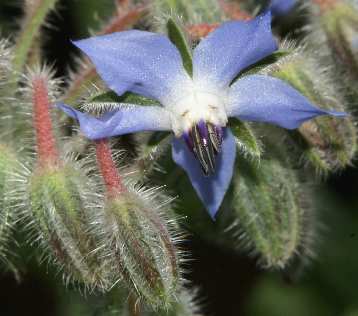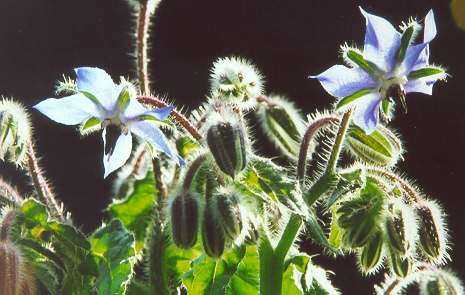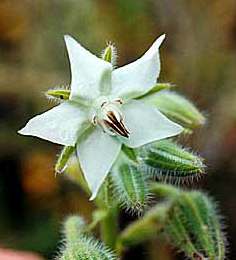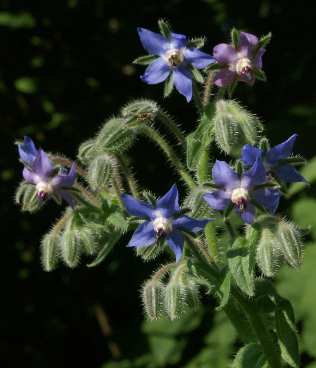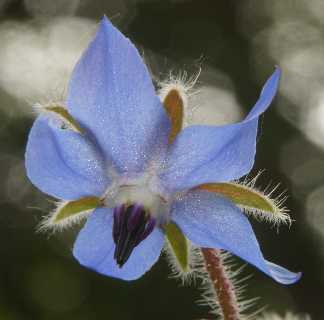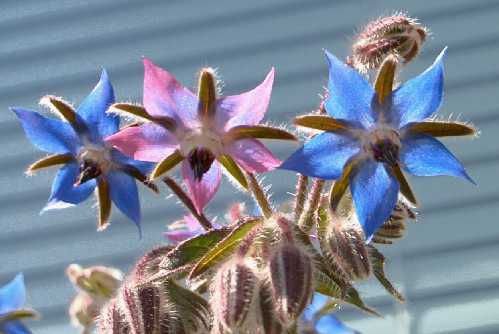
|
| Young flowers of borage can be pink and become blue only in the course of their individual flowering period. Other plants form flowers which are blue from the beginning. |
In many regions of Germany, sauces prepared from herbs are very popular in spring time; many of the recipes contain borage. Most known, even outside Germany, is the Green Sauce made in Frankfurt (Frankfurter Grüne Sauce, called grie soß in the local dialect). The traditional recipe calls for exactly seven herbs: parsley, chervil, chives, cress, sorrel (Rumex acetosa), burnet (Sanguisorba minor) and borage; lemon balm, though not traditional, is a good addition. The Green Sauce is served to boiled or braised meat, boiled young potatoes, fish and vegetables.
In the most ancient recipes, the sauce is prepared with herbs and vegetable
oil only, which must have resulted in a mayonnaise-like product; today, diet
variants are much more popular, employing diary products (yoghurt, crème
fraîche or sour cream). In any case, boiled egg yolks are mandatory; the
sauce is then seasoned with vinegar or lemon juice,
white pepper, optionally puréed garlic and a dash of mustard
paste.
There are countless variants of this sauce, most of which are loathed by
Frankfurt’s true inhabitants. Adding pickled cucumbers is quite popular, and
more herbs may be employed, of which dill, lovage and tarragon are
most common. Similar recipes, probably predecessors, are called sauce vert in France; the recipe does also have some feature in
common with Ligurian pesto (see basil).
